
4-29 #BFF : Arm will team up with manufacturing partners to develop the new semiconductor; Samsung is allegedly planning to bring back Exynos SoCs to its S series; Apple will reportedly start using microLED panels as early as 2024; etc.

Arm is reportedly building its own semiconductor to showcase the capabilities of its products, as it seeks to attract new customers and fuel growth following its Initial Public Offering (IPO) later in 2023. Arm will team up with manufacturing partners to develop the new semiconductor. The company has built a new “solutions engineering” team that will lead the development of these prototype chips for mobile devices, laptops and other electronics. The chip designer has no plans to sell or license the product and is only working on a prototype. (Android Headlines, Financial Times, Reuters, PC Mag, Yahoo)
Samsung is allegedly planning to bring back Exynos SoCs to its flagship lineup of smartphones, the Galaxy S series. According to Hyeokman Kwon, Vice President of the DS Division at Samsung LSI, the company is pushing for the return of Exynos to the flagship of the Galaxy series. (Android Authority, ZDNet, SamMobile)
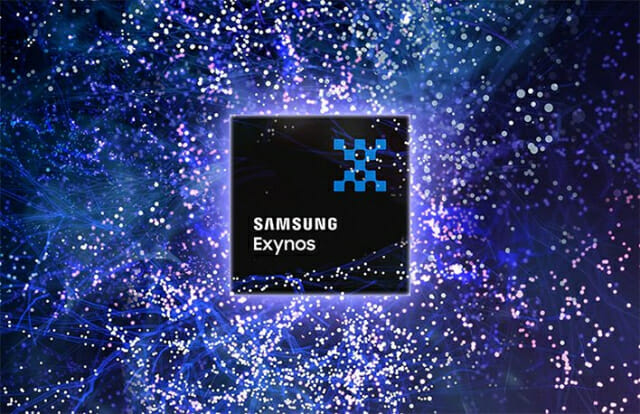
Microsoft is allegedly readying a new Surface Go for release in 2023 that will feature an ARM processor for the first time. The Surface Go 4 is codenamed Tanta and will ship with a Snapdragon 7c-based SoC in the entry-level model and offer similar performance to the current Surface Go but with better power efficiency for longer-lasting battery life. The new SoC may also allow Microsoft to include 5G capabilities in the Surface Go for the first time, though this has not been confirmed. (Gizmo China, Windows Central)
Taiwan Semiconductor Manufacturing Compay (TSMC) is allegedly straining to meet demand from top customer Apple for 3nm chips. The company’s tool and yield struggles have impeded the ramp to volume production with world-leading technology. In 2H23, TSMC will ramp Apple’s A17 and M3 processors at the N3 node, as well as ASIC-based server CPUs at N4 and N3, according to Mehdi Hosseini, senior equity research analyst with Susquehanna International Group. TSMC will also fabricate Intel’s Meteor Lake graphic chiplets at N5, AMD’s Genoa and Nvidia’s Grace processors at N5 and N4, as well as Nvidia’s H100 GPU at N5. Apple will pay TSMC for known good die rather than standard wafer prices, at least for the first 3-4 quarters of the N3 ramp as yields climb to around 70%, according to Brett Simpson, senior analyst at Arete Research. (Android Headlines, EE Times)
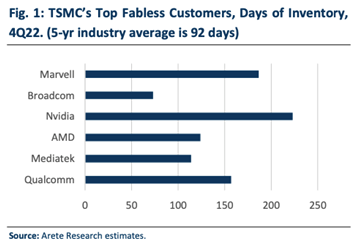
Samsung is reportedly working on a new flagship chipset, expected to be called Exynos 2400. The SoC will incorporate a new RDNA2-based graphics unit with 6WGP. This has 4 times the compute units of the Xclipse 920 GPU in the Exynos 2200. WGP stands for “workgroup processor” and is part of the RDNA architecture developed by AMD. One WGP encompasses 2 compute units in the new RDNA2 solution. Samsung is partnering with AMD and game developers to implement ray tracing technologies in its latest chips. (CN Beta, GSM Arena, Twitter)
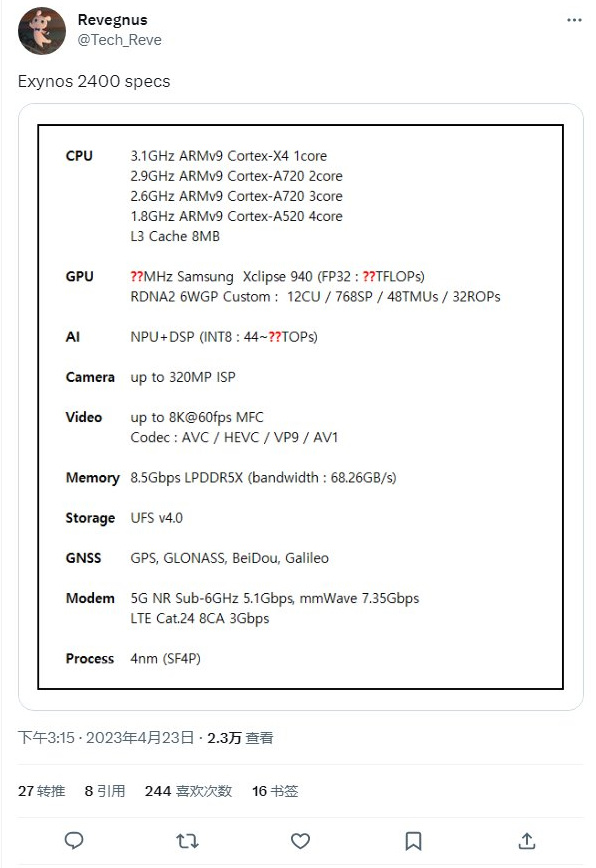
Intel’s roadmap shows that the company is supposed to unveil its 14th generation platform in the latter part of 2023, which is codenamed Meteor Lake. Intel’s patent is labeled “Early Platform Hardening Technology For Slimmer And Faster Boot”. It details how next-generation SoCs could have “large on-package caches”. It says this L4 cache, or Adamantine, would be part of the base tile that all the other tiles sit on top of, allowing each tile access. Meteor Lake will fully embrace the hybrid architecture combining 5 different tiles: CPU, SoC, GPU, I/O and base tile. The Adamantine cache would offer much faster access time than any typical cache like L3, which is typically part of the CPU tile. As explained by Intel, the main purpose of L4 cache is to improve boot optimization and increase security around the host CPU. Furthermore, the L4 cache would preserve the cache at reset, leading to improved loading times that would otherwise have to go through all boot/reset cycles.(CN Beta, Hot Hardware, Tom’s Hardware, USPTO, VideoCardZ)
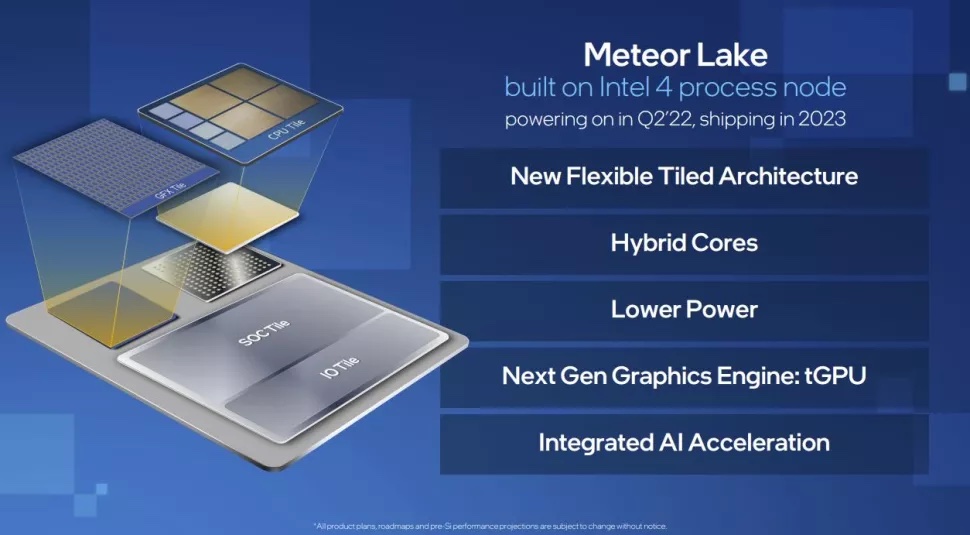
Qualcomm is rolling out new upscaling technology called Snapdragon Game Super Resolution (GSR). Qualcomm claims its upscaling tech can boost games from 1080p to 4K and 30FPS to 60 and over FPS. Upscaling is beneficial to performance and battery life because it allows a game to run at lower resolutions without sacrificing quality. GSR uses a new technique to raise resolution, frame rate, and battery life. It is described as a “single pass spatial upscaling technique optimized for Snapdragon Adreno graphics processing units (GPUs)”. Most techniques tend to require two passes. So this single-pass system is capable of reducing memory usage, bandwidth, latency, and battery usage.(Gizmo China, Android Authority, Qualcomm, XDA-Developers)
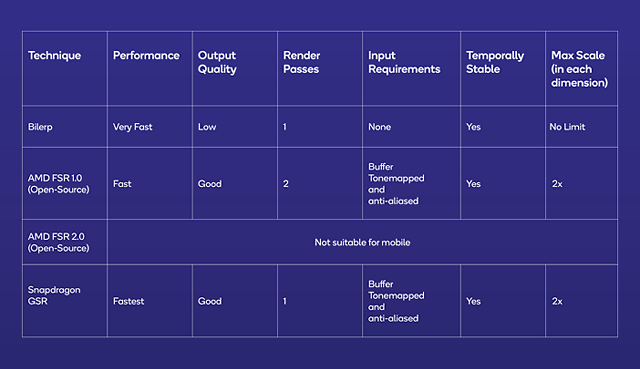

Hisense has recently been granted a patent for a dual-screen smartphone that allows users to view content on both front and rear screens simultaneously. The patent transforms the phone’s back cover into a functional display. Notably, this design does not follow the foldable screen approach. (Gizmo China, IT Home)
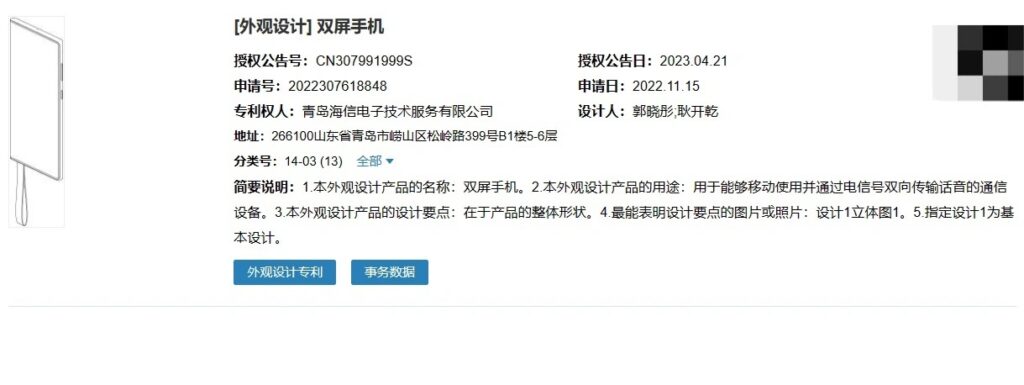
Apple will reportedly start using microLED panels as early as 2024. According to a report by the Institute for Information & Communications Technology Promotion (IITP), Apple is looking to eventually manufacture the panels itself, but it will not be ready to do so at the start of the transition. Apple will keep sourcing panels from South Korea, with at least 60% of the orders going to Samsung Display and LG Display. The transition from organic light-emiting diode to micro light-emitting diode display technology will begin in 2024 with the Apple Watch Ultra. Once the panels mature and yields and pricing improve, we will see iPhones with microLED display. However, IITP has stated that this will happen no earlier than 2025. (Apple Insider, UDN, CNYes, Yahoo, My Drivers, Korea Herald, GSM Arena)
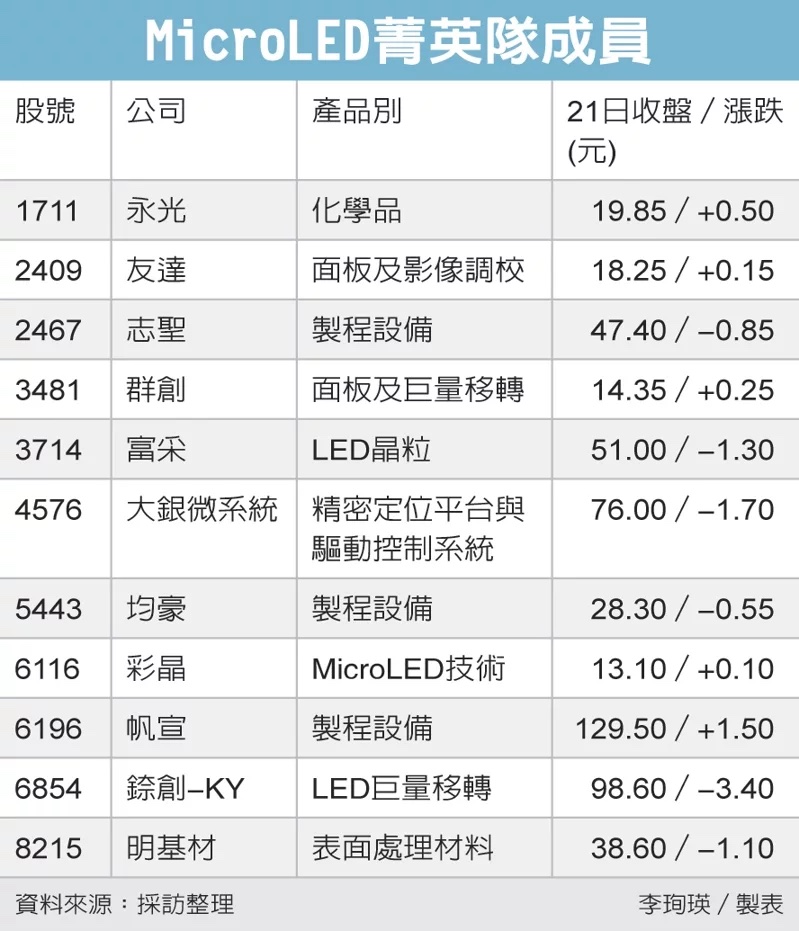
Apple is working on an updated version of the Apple Watch Ultra that has an improved microLED display, but the device will not launch until 2H25, according to display analyst Ross Young. Young believes that the microLED Apple Watch has now been “pushed out” to 2025 at the earliest. The Apple Watch Ultra is expected to be the first Apple device to adopt a microLED display, but Apple is planning to bring the technology to the iPhone and other devices in the future. (Apple Insider, MacRumors)
Samsung Galaxy Z Flip5 will allegedly feature a “folder-shaped” cover display. The phone will fold flat, and it will feature rather thin bezels on the main display. It is also expected to offer water and dust resistance. (Android Headlines, Twitter)
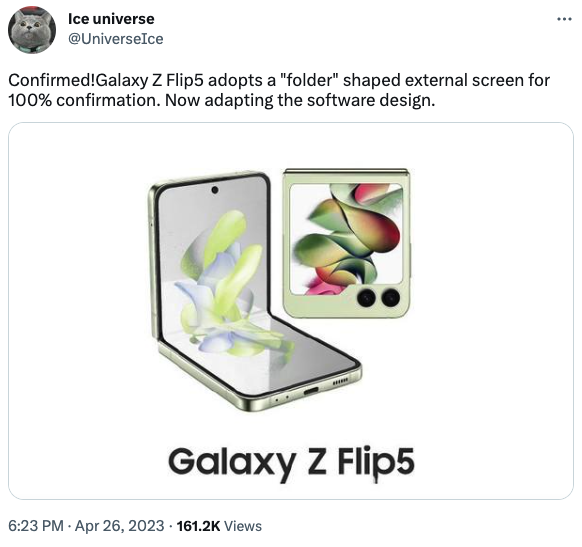
According to DSCC analyst Ross Young, Samsung Galaxy Z Flip5 production numbers will be double of the Galaxy Z Flip4. The Galaxy Z Flip5 and the Fold5 are also coming with a new improved hinge mechanism. Samsung is finally taking some steps to reduce the crease and make the phone look flat when folded. (GSM Arena, Twitter, GizChina)
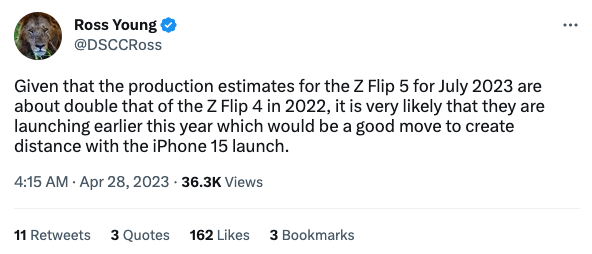

Smartphone lens module specialists Largan Precision and Genius Electronic Optical (GSEO) have been identified as potential suppliers for Apple’s next iPhone series that is expected to feature periscope lenses, according to Digitimes. GSEO shipped periscope lenses to a Japanese handset vendor in 2021. Apple’s iPhone 15 Pro Max is expected to include a periscope camera system, in which light entering the telephoto lens is reflected by an angled mirror towards the camera’s image sensor. The change in direction in which the light travels allows for a longer “folded” telephoto setup inside phones, enabling users to zoom in further without any blurriness or other reduction in quality. The system is expected to add a 5-6x optical zoom to Apple’s next premium iPhone model (the current iPhone 14 Pro supports up to 3x optical zoom). (Gizmo China, Digitimes, Patently Apple, MacRumors, Inside, ETToday)
Apple’s next-generation iPhone 15 Pro Max is widely expected to feature a so-called “periscope lens” that would allow for up to 5-6x optical zoom. Periscope technology would be built into the Telephoto lens and allow for up to 6x zoom when shooting photos with the rear camera, without any blurriness or reduction in image quality. (Gizmo China, MacRumors)

Mark Gurman of Bloomberg says Apple’s AR / VR headset features two ports; a USB-C port for data transfer and a proprietary magnetic port to attach the battery pack. The external battery pack is required for the headset to function, and apparently resembles the MagSafe Battery Pack in size and shape. It will provide about two hours of battery life. By relying on an external battery pack, the headset itself can be lighter. This should improve comfort of the wearer. The downside of course is that requires an ungainly wire trailing out of the headset during use, with the user presumably expected to keep the battery pack in a pocket on their clothing. (Apple Insider, Ars Technica, 9to5Mac, Bloomberg)

Finnish telecom gear maker Nokia reported a whopping 327% in net sales from its India business to EUR853M in 1Q23 over just EUR200M in the same period in 2022, riding on the back of 5G network expansion by the two telcos Airtel and Reliance Jio. Indian sales growth more than offset slowing demand from the North American market. (Gizmo China, Economic Times)
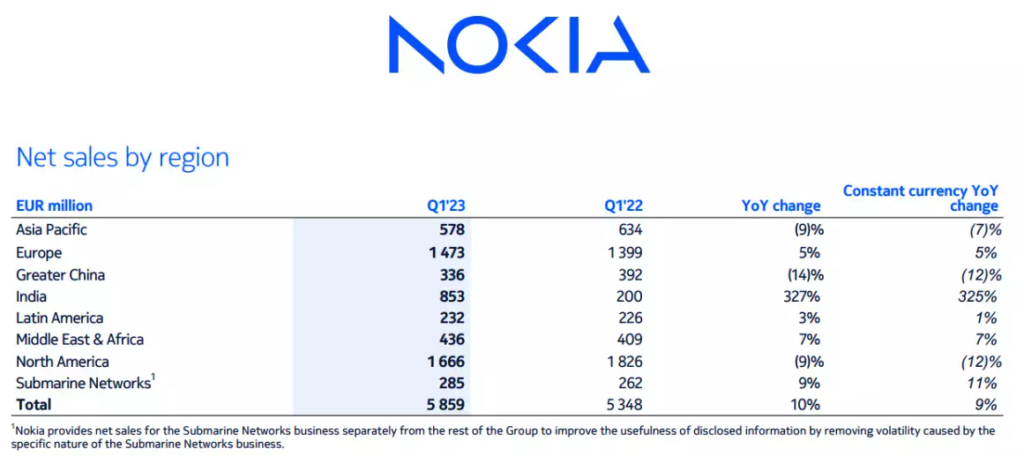

Apple is allegedly working on an artificial intelligence-powered health coaching service and new technology for tracking emotions, its latest attempt to lock in users with health and wellness features. The new coaching service, codenamed Quartz, is designed to keep users motivated to exercise, improve eating habits and help them sleep better. As part of the initiative, the Health app is reportedly coming to iPadOS 17 to entice healthcare professionals who use iPads in their work. The coaching service may appear in 2024, but the iPad Health app could see an iPadOS 17 launch. (Apple Insider, Bloomberg, TechCrunch)
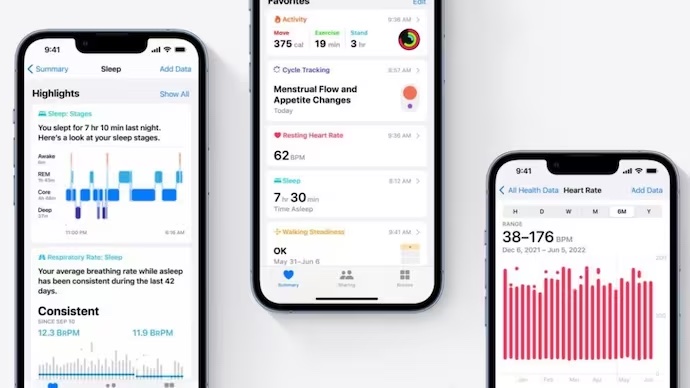
With the demand for refurbished smartphones continuing to grow across most geographies, the global secondary smartphone market grew 5% YoY in 2022, according to Counterpoint Research. The growth would have been more if not for the 17% decline in China’s refurbished smartphone sales. This was the steepest drop for the Chinese secondary market in years. A resurgence of COVID-19 and introduction of “COVID-Zero” policies were the major factors affecting business and demand in the country. India led the global refurbished smartphone market in 2022 with 19% YoY growth, followed closely by LATAM with 18% YoY growth. In terms of brands, Apple’s global volumes grew 16% YoY in 2022, taking its secondary market share to over 49%. (Android Headlines, CN Beta, Counterpoint Research)
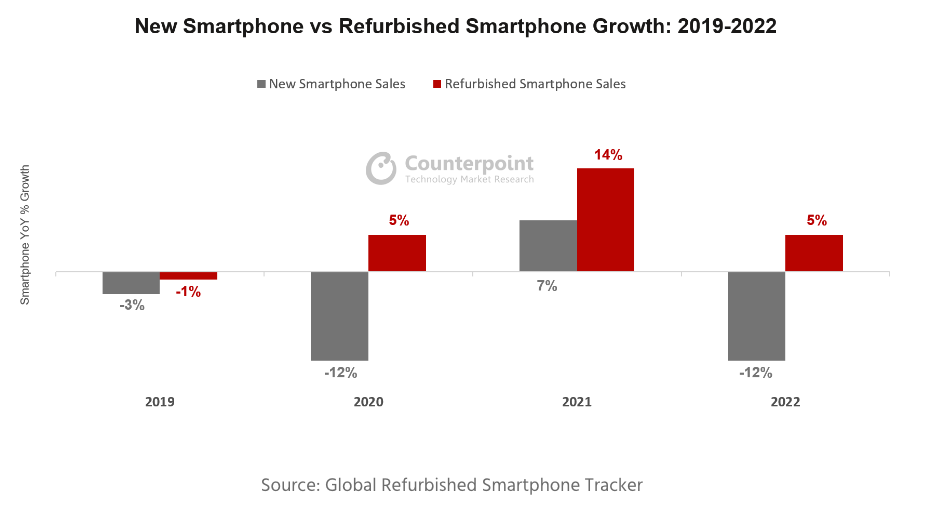
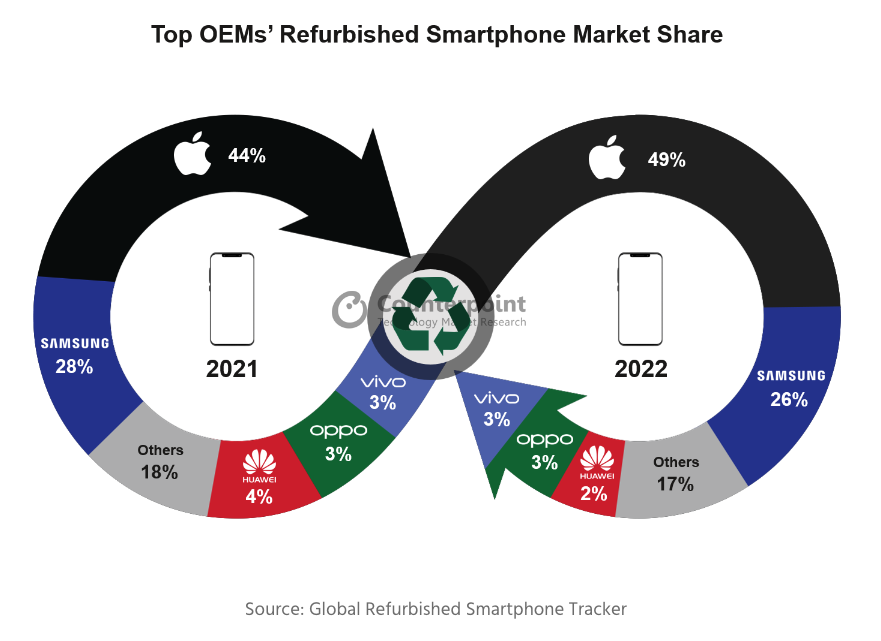
The Karnataka High Court has rejected the petition filed by Xiaomi India challenging an order passed by the Competent Authority appointed under the Foreign Exchange Management Act,1999 (FEMA), confirming the order issued by the Enforcement Directorate (ED) seizing INR5,551.27 crores of the company. A single judge bench of Justice M Nagaprasanna though upheld the maintainability of the petition, it dismissed the same on merits. The company had approached the court challenging the constitutional validity of section 37A of FEMA Act contending it to be violative of Article 14, 20 read with Article 300A and 301 of the Constitution of India. The provision empowers Centre’s authorized officer to seize an entity’s assets in India on suspicion of violation of FEMA. (CN Beta, Economic Times, Live Law)
Samsung extends 4-year update policy to one of its cheapest A series phones. The Galaxy A24 comes with One UI 5.1 based on Android 13. This means the phone should get updated all the way to Android 17. It even gets 5 years worth of security updates.(Android Headlines, Samsung)
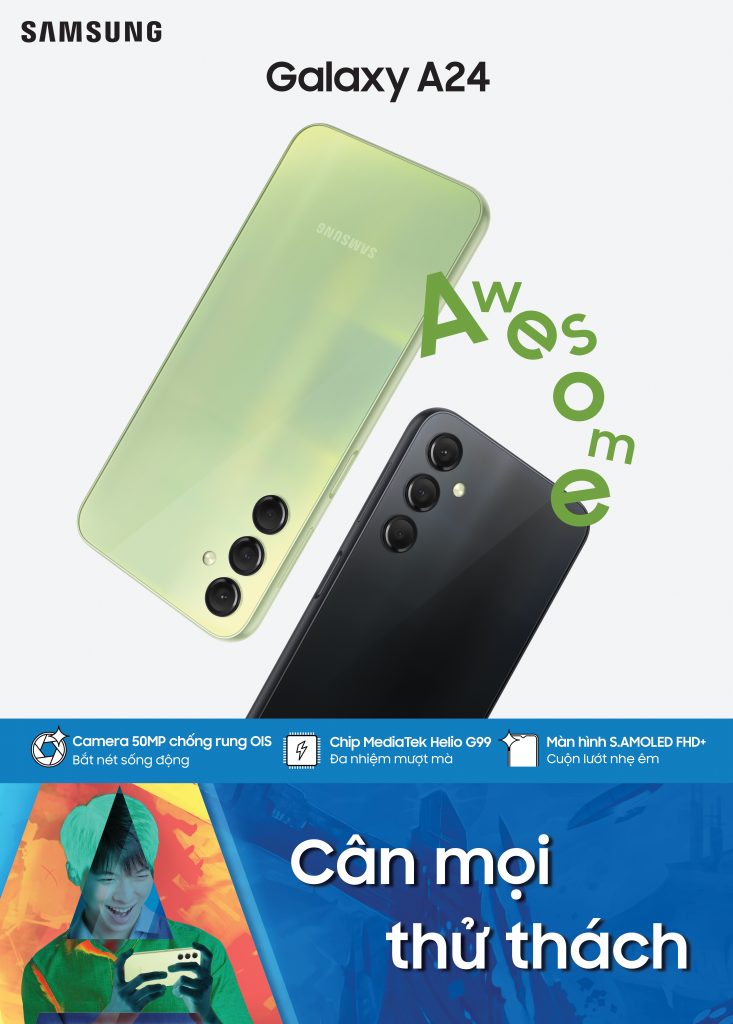
According to CIRP, younger (18-24 years) and middle-aged (35-44 years) Apple iPhone users are the most likely to own iPhones that are less than a year old, indicating a strong interest in upgrading to the latest models. Older iPhone users (ages 55-64 and 65+) were more likely to have iPhones that are more than two years old, indicating little interest in updating or a longer update cycle. iPhone users between the ages of 25 and 34 fall in the middle, with a relatively even distribution of iPhones across the different ages. Overall, about half of iPhone users had an iPhone that was less than two years old, while about a quarter had an iPhone that was more than three years old. (GizChina, 9to5Mac)
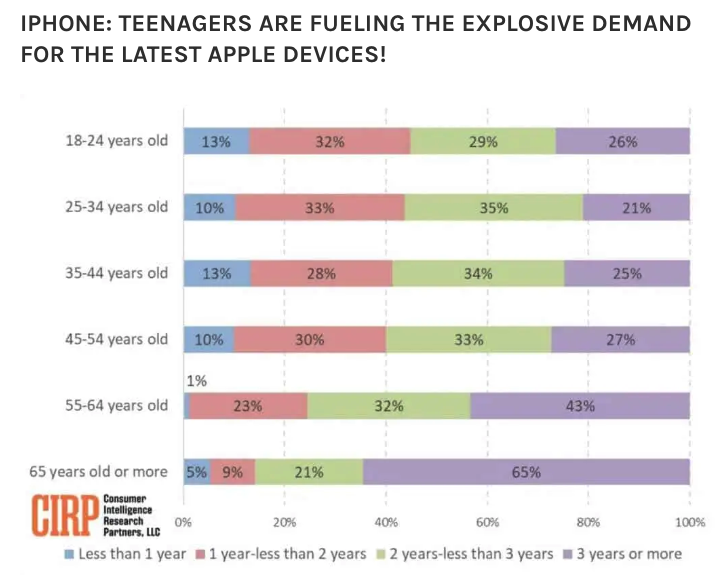

Apple supplier Quanta Computer plans to set up a factory in northern Vietnam. The company has signed an agreement with the authorities of Nam Dinh province, 90km (56 miles) south of Hanoi, to construct the facility at an industrial park there. The facility, which would be Quanta’s 9th factory globally, would initially cover an area of 22.5 hectares, without giving its capacity nor a time frame for the construction. Quanta would invest USD120M in the factory.(Apple Insider, Reuters, Business Insider, US News, CNYes, UDN)
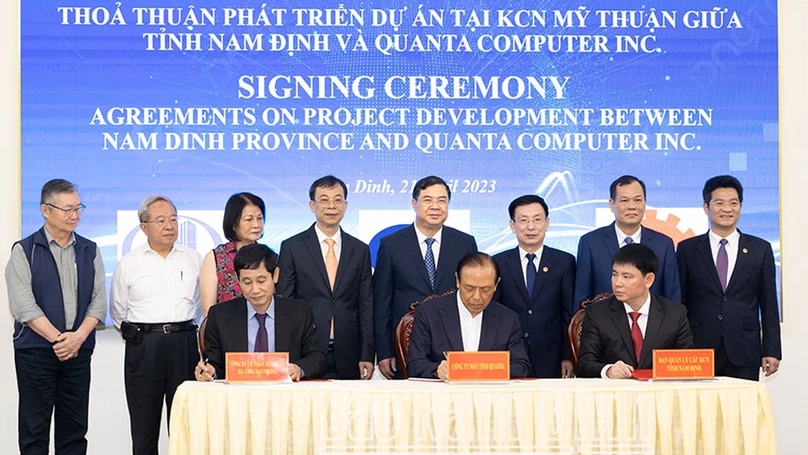

Apple is reportedly preparing to unveil its AR/VR “mixed” reality headset at in Jun 2023, and the company is working to create appealing app experiences to encourage people to adopt the device. Apple is planning to adapt iPad apps for the headset, and users will be able to access existing App Store content through the 3D interface of the device. Apple-designed apps such as Safari, Calendar, Contacts, Home, Files, Messages, Notes, Photos, Music, Reminders, and other built-in apps will be optimized for the device. Multiple apps will be able to be run at one time, and there will be a geolocation aspect for swapping between apps when the user is in different rooms. A Fitness+ app will allow users to exercise while watching the Fitness+ instructor in a virtual reality setting, and there will be a Health app for guiding users through meditations with graphics, sounds, and voice-overs. (GizChina, MacRumors, Bloomberg)
Sony has announced that the company sold 6.3M Playstation 5 (PS5) in 4Q22, compared to 2M units in same period of 2021. That brings its total for fiscal year 2022 to 19.1M, handily beating its own forecast of 18M. The company has now sold 38.4M PS5s since the console was released in late 2020. (Engadget, GizChina, Sony)


BMW is now including the Android OS in its support for the Digital Key Plus. BMW brings Digital Key Plus support to a few compatible Google and Samsung Android devices. BMW’s Digital Key Plus, accessible from the My BMW app, lets the driver use their compatible Android phone as their car’s key. The Express mode is a programmable feature of Digital Key Plus that lets users customize their hands-free experience. Digital Key Plus utilizes ultra-wideband technology (UWB) for close-range communication with car (using precise localization) for comfortable security. BMW states its use of UWB ensures that in the event of a relay attack (jammed signal or interception) is “virtually eliminated”.(Android Central, BMW, Android Headlines)
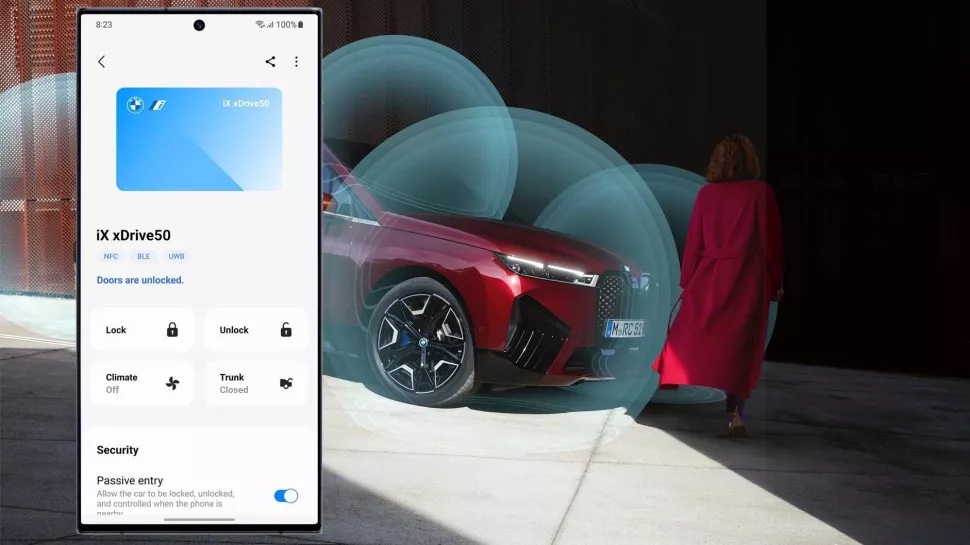
BYD’s General Manager of Brand and Public Relations, Li Yunfei, has recently shared that the company showcased its new brands (models), including Dynasty, Ocean, Tengshi, and Yingwang. He has also announced that BYD aims to sell 3M vehicles in domestic and international markets in 2023. Since stopping traditional vehicle production in March 2022, BYD has introduced new technologies such as battery-vehicle body integration and more efficient hybrid systems. To cater to different customer needs, the company has also adopted a multi-brand strategy.(Gizmo China, My Drivers, Sina)
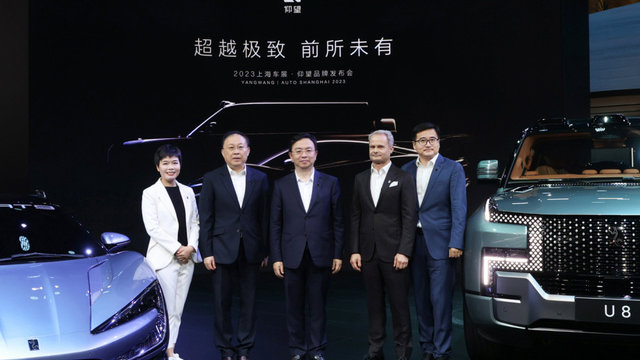
Ford is remaking its manufacturing complex in Ontario to make electric vehicles and is rethinking its approach to the Chinese market. Ford currently builds the Ford Edge and Lincoln Nautilus at its factory in Oakville, Ontario, a facility that first opened in 1953. Now Ford says it will invest USD1.5B to transform the Oakville Assembly Complex into a Canadian hub for manufacturing electric vehicles and battery packs. The reconfigured site will play a key role in Ford’s plan to reach a global production run rate of 2M EVs annually by the end of 2026. Ford CEO Jim Farley has said that his company needs to rethink its sales and manufacturing strategy for China, considering its hyper-competitive market for electric vehicles. Farley said it was notable that the only premium brands succeeding in China were all-electric from the start and had a focus on the “digital experience”.(Gizmo China, India Times, Ford Authority, CleanTechnica)
